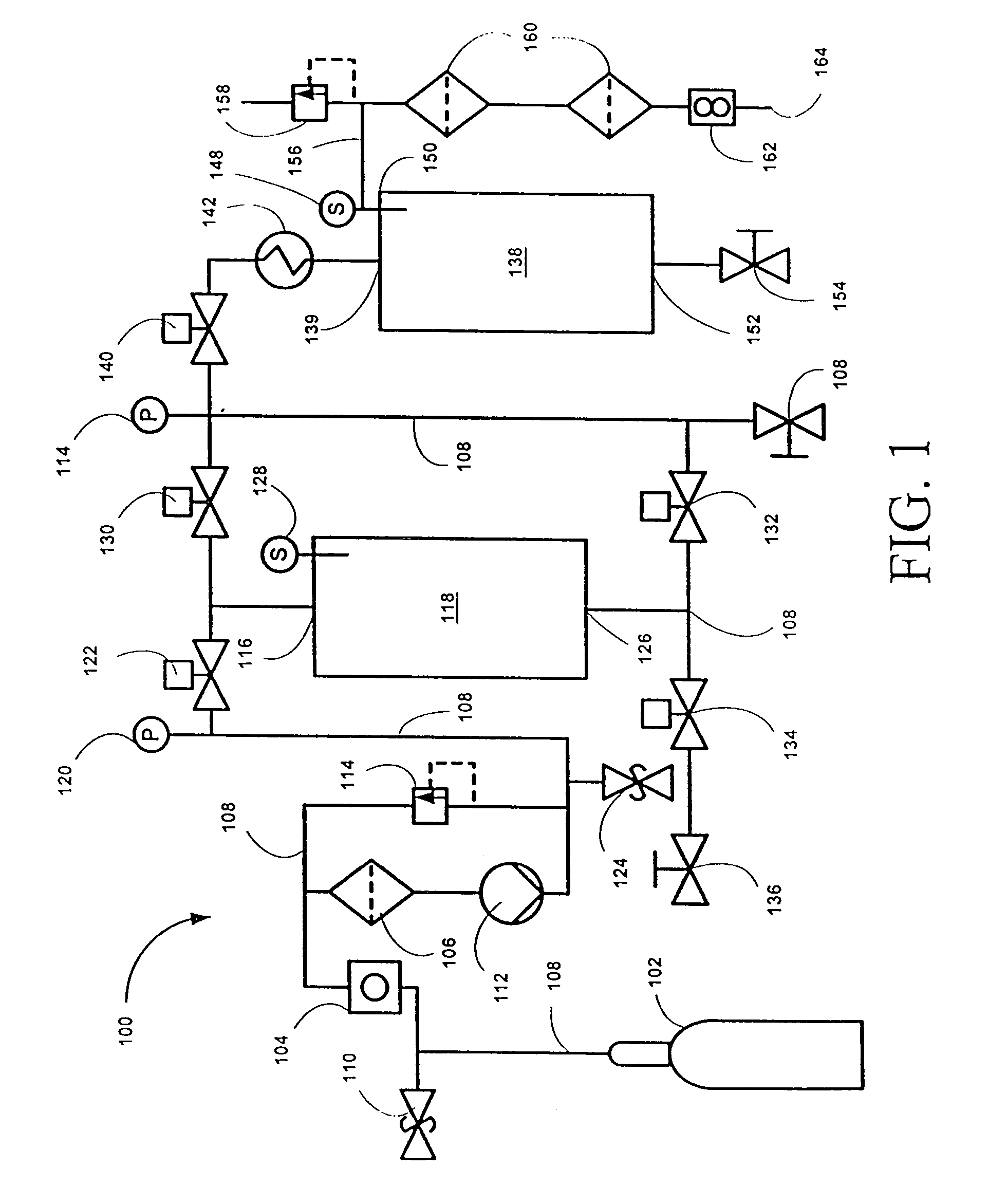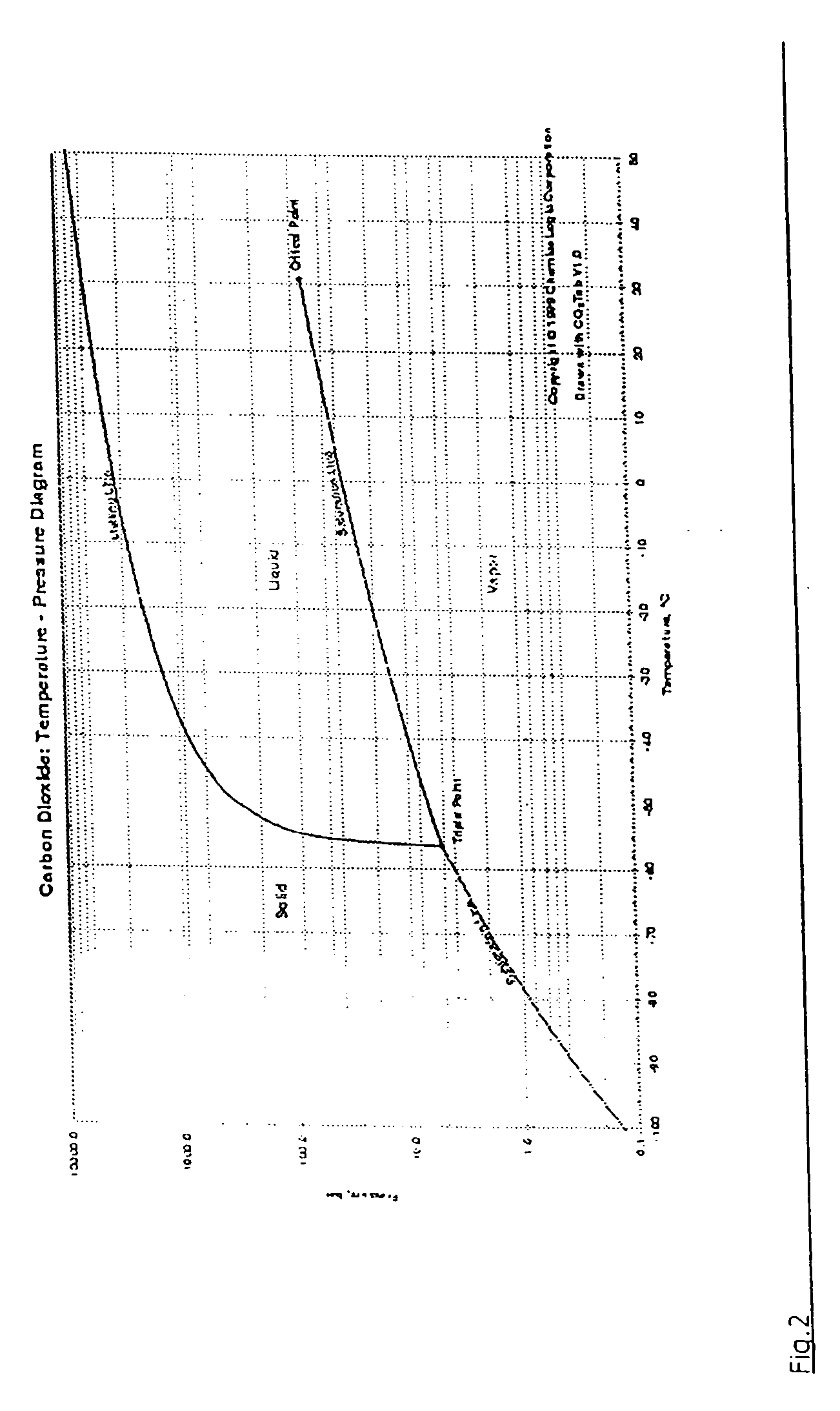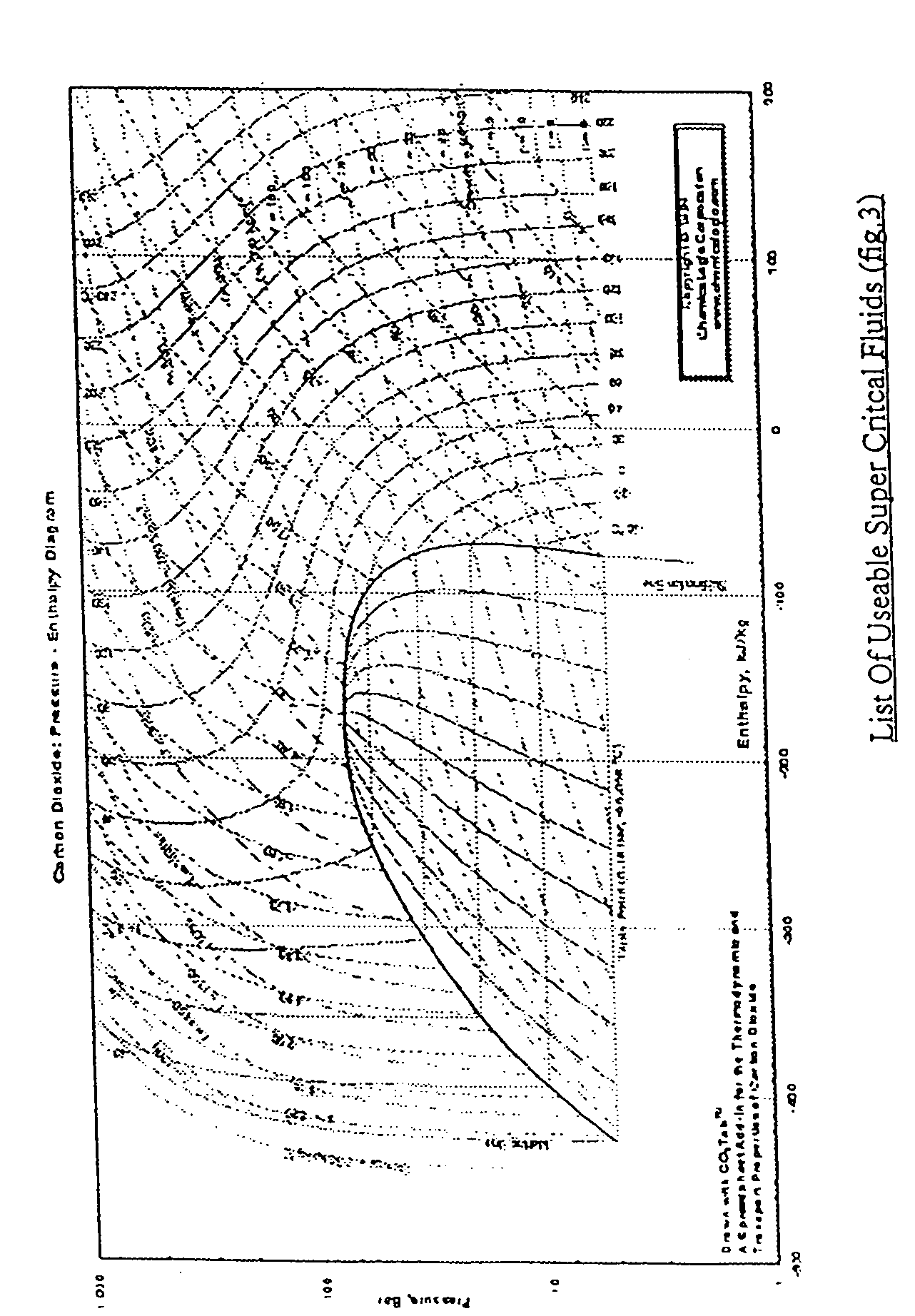Cleaning of hydrocarbon-containing materials with critical and supercritical solents
a hydrocarbon-containing material and supercritical technology, applied in the direction of cleaning using liquids, separation processes, wellbore/well accessories, etc., can solve the problems of not being able to clean up drilling fluids, potential difficulties, and difficult high pressure charging of the material to be treated
- Summary
- Abstract
- Description
- Claims
- Application Information
AI Technical Summary
Problems solved by technology
Method used
Image
Examples
example 2
[0106] This example illustrates the cleanup of a sample of oil laden solids obtained after well fluids are subjected to centrifugation under supercritical conditions using CO.sub.2 at 1,000 psi and at 25.degree. C.
[0107] The cell was cleaned and prepared as described in Example 1. After preparation, the pressure was increased to about 1000 psi at a temperature of about 25.degree. C. The pressure and temperature were maintained for about 1 hour. Under these conditions only partial oil removal was achieved with the recovery being about 60%.
example 3
[0108] This example illustrates the cleanup of a sample of oil laden solids obtained after well fluids are subjected to centrifugation under supercritical conditions using CO.sub.2 at 2,000 psi and at 27.8.degree. C.
[0109] The cell was cleaned and prepared as described in Example 1. After preparation, the pressure was increased to about 2000 psi at a temperature of about 27.8.degree. C. The pressure and temperature were maintained for about 20 minutes. Under these conditions only partial oil removal was achieved with the recovery being about 85%.
example 4
[0110] This example illustrates the cleanup of a sample of oil laden solids obtained after well fluids are subjected to centrifugation under supercritical conditions using CO.sub.2 at 2,500 psi and at 22.5.degree. C.
[0111] The cell was cleaned and prepared as described in Example 1. After preparation, the pressure was increased to about 2500 psi at a temperature of about 22.5.degree. C. The pressure and temperature were maintained for about 10 minutes. Under these conditions only partial oil removal was achieved with the recovery being about 95%.
PUM
| Property | Measurement | Unit |
|---|---|---|
| temperature | aaaaa | aaaaa |
| critical pressure | aaaaa | aaaaa |
| Tc | aaaaa | aaaaa |
Abstract
Description
Claims
Application Information
 Login to View More
Login to View More - R&D
- Intellectual Property
- Life Sciences
- Materials
- Tech Scout
- Unparalleled Data Quality
- Higher Quality Content
- 60% Fewer Hallucinations
Browse by: Latest US Patents, China's latest patents, Technical Efficacy Thesaurus, Application Domain, Technology Topic, Popular Technical Reports.
© 2025 PatSnap. All rights reserved.Legal|Privacy policy|Modern Slavery Act Transparency Statement|Sitemap|About US| Contact US: help@patsnap.com



